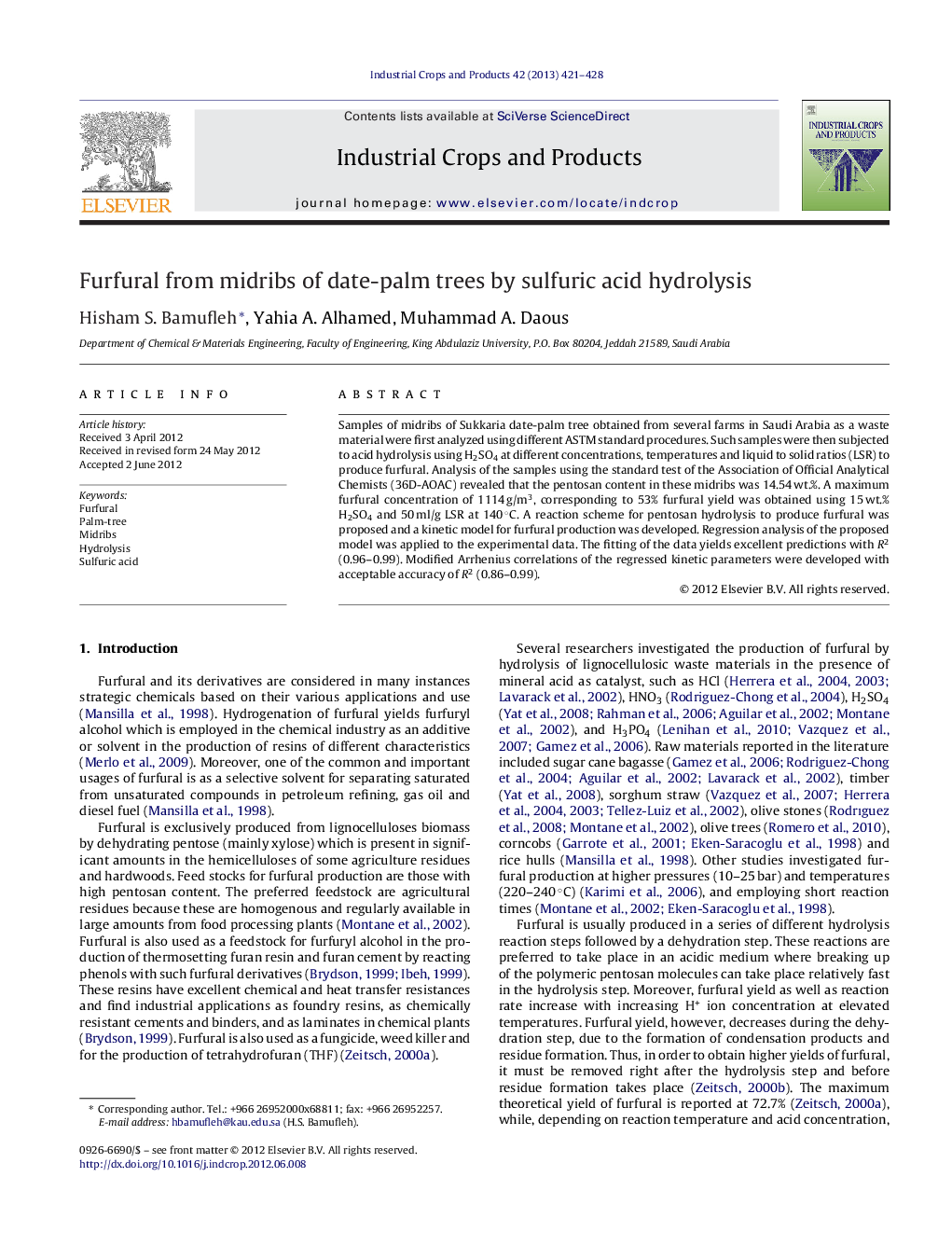| Article ID | Journal | Published Year | Pages | File Type |
|---|---|---|---|---|
| 4513764 | Industrial Crops and Products | 2013 | 8 Pages |
Samples of midribs of Sukkaria date-palm tree obtained from several farms in Saudi Arabia as a waste material were first analyzed using different ASTM standard procedures. Such samples were then subjected to acid hydrolysis using H2SO4 at different concentrations, temperatures and liquid to solid ratios (LSR) to produce furfural. Analysis of the samples using the standard test of the Association of Official Analytical Chemists (36D-AOAC) revealed that the pentosan content in these midribs was 14.54 wt.%. A maximum furfural concentration of 1114 g/m3, corresponding to 53% furfural yield was obtained using 15 wt.% H2SO4 and 50 ml/g LSR at 140 °C. A reaction scheme for pentosan hydrolysis to produce furfural was proposed and a kinetic model for furfural production was developed. Regression analysis of the proposed model was applied to the experimental data. The fitting of the data yields excellent predictions with R2 (0.96–0.99). Modified Arrhenius correlations of the regressed kinetic parameters were developed with acceptable accuracy of R2 (0.86–0.99).
► We tested midribs of date-palm trees, as an agricultural waste, for furfural production. ► Hydrolysis of midribs using 15 wt.% H2SO4 at 140 °C provides a maximum furfural yield of 53%. ► Both yield and kinetics are sensitive to acid concentration, and hydrolysis temperature. ► Hydrolysis data are fit well by pseudo-homogenous irreversible first order reaction kinetics. ► Reaction rate constants are described well by a modified Arrhenius equation.
